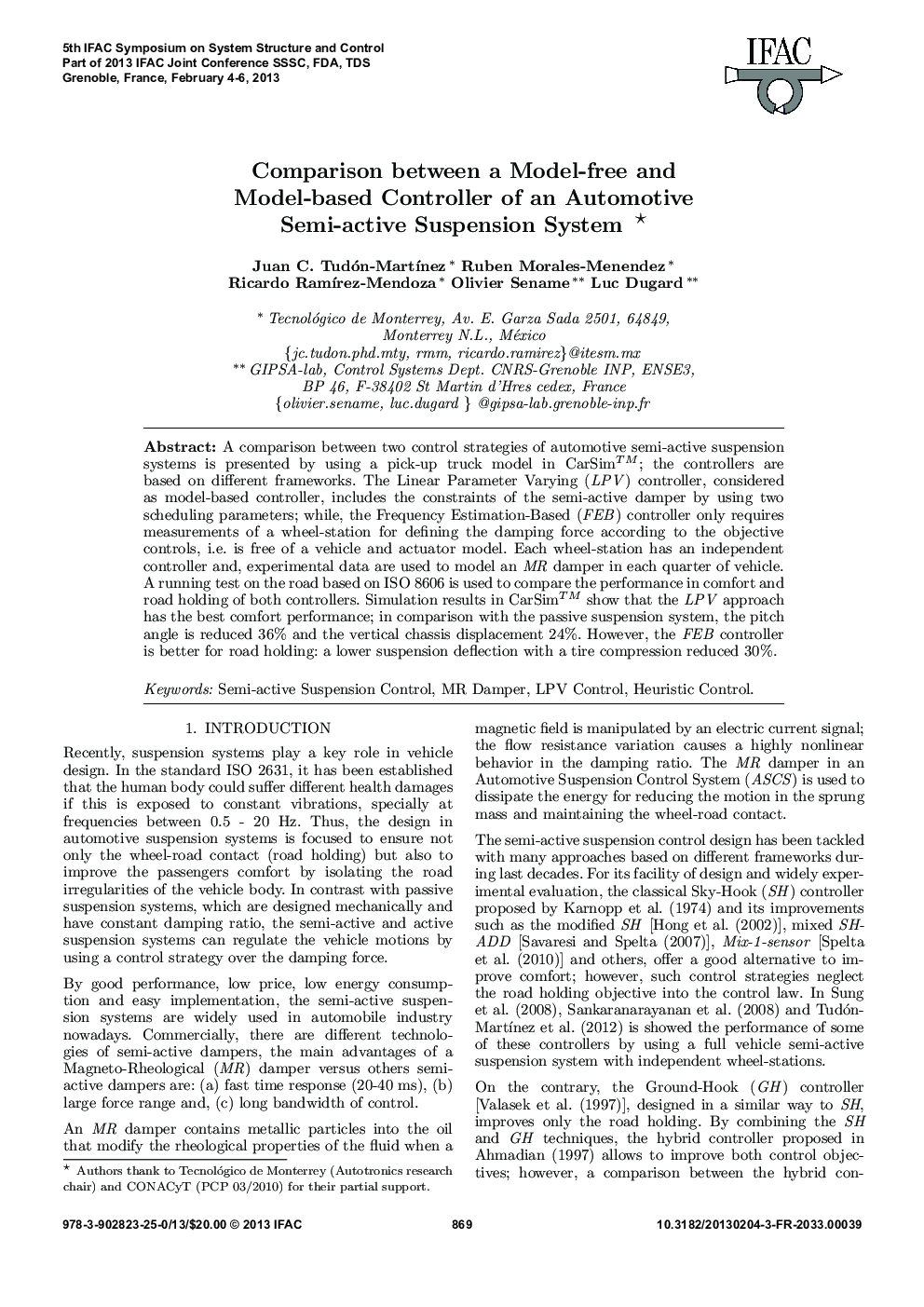| Article ID | Journal | Published Year | Pages | File Type |
|---|---|---|---|---|
| 715383 | IFAC Proceedings Volumes | 2013 | 6 Pages |
A comparison between two control strategies of automotive semi-active suspension systems is presented by using a pick-up truck model in CarSim™ the controllers are based on different frameworks. The Linear Parameter Varying (LPV) controller, considered as model-based controller, includes the constraints of the semi-active damper by using two scheduling parameters; while, the Frequency Estimation-Based (FEB) controller only requires measurements of a wheel-station for defining the damping force according to the objective controls, i.e. is free of a vehicle and actuator model. Each wheel-station has an independent controller and, experimental data are used to model an MR damper in each quarter of vehicle. A running test on the road based on ISO 8606 is used to compare the performance in comfort and road holding of both controllers. Simulation results in CarSim™ show that the LPV approach has the best comfort performance; in comparison with the passive suspension system, the pitch angle is reduced 36% and the vertical chassis displacement 24%. However, the FEB controller is better for road holding: a lower suspension deflection with a tire compression reduced 30%.
